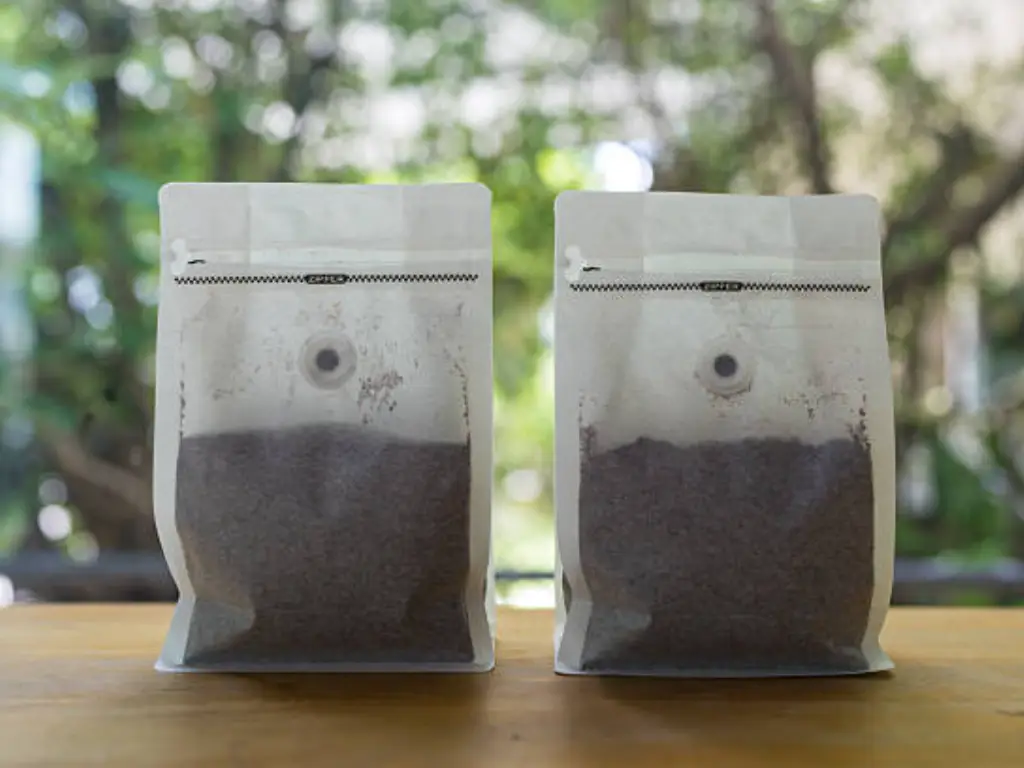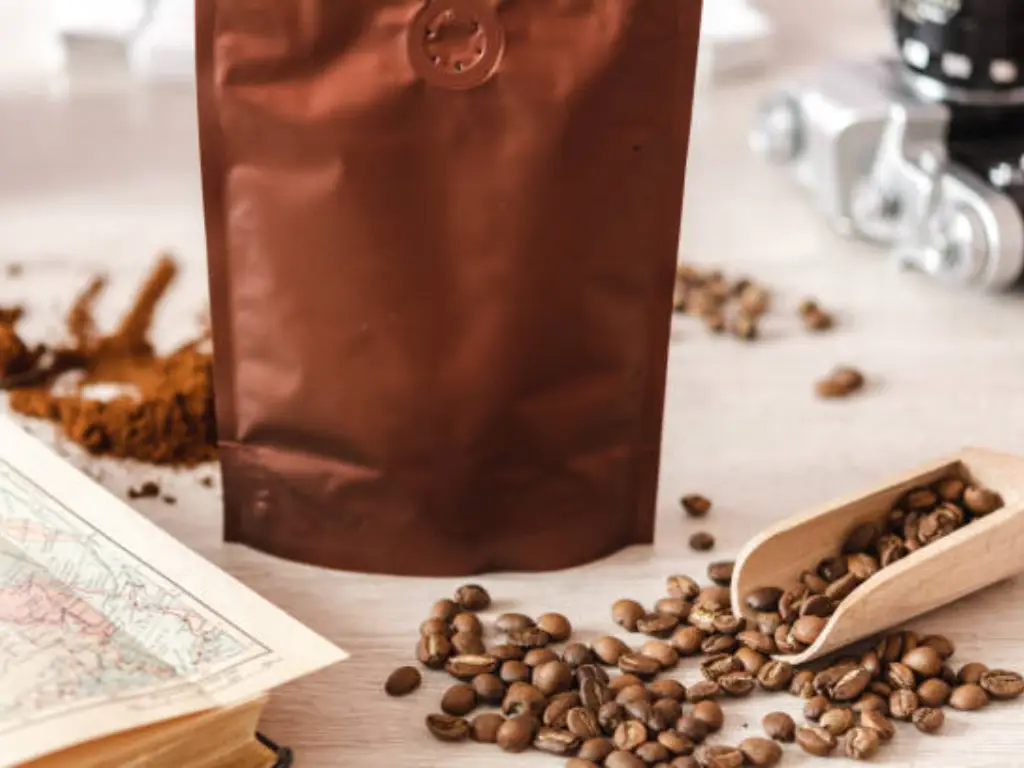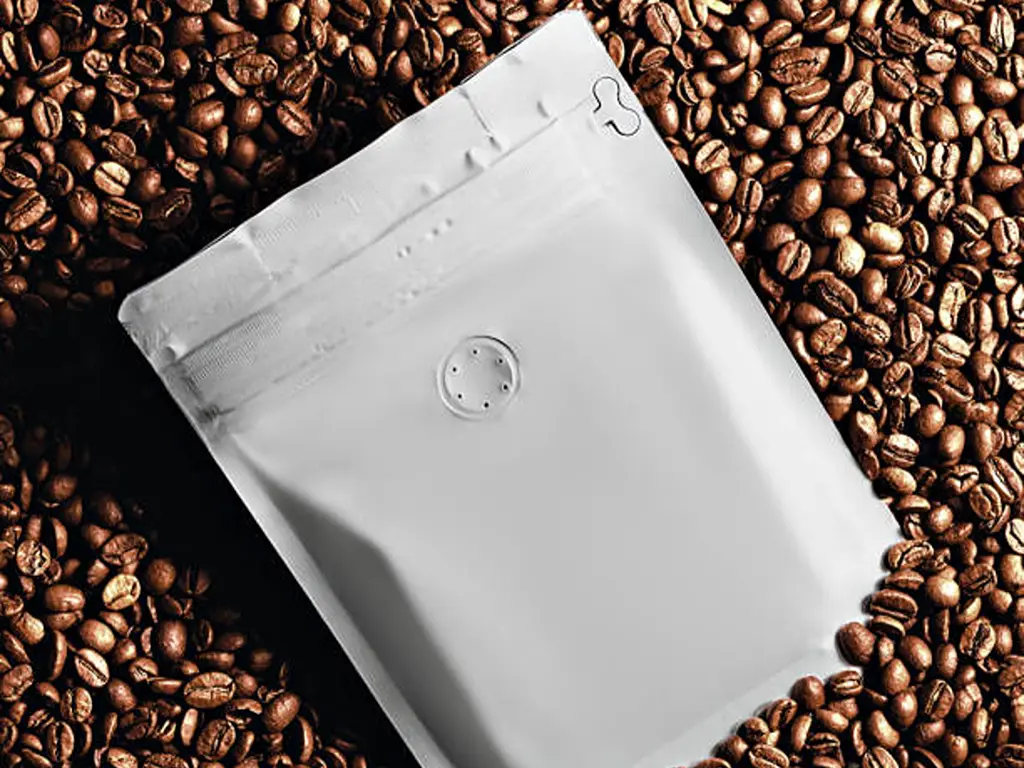Introduction
The modern coffee bag is a carefully designed bag that assures that the volatile and complex chemistry of the roasted beans is not lost. It has a small, frequently neglected plastic piece on its surface, to which this function is central. Such a device, a one-way degassing valve, is not just a random part but a decisive technology that can significantly impact the quality and taste of coffee.
This paper will give a systematic analysis of the one-way degree valve. We will explore the scientific reasons why it has to be included, how exactly it performs its mechanical task, and examine the role of the inclusion in the overall picture of coffee packaging. It aims to provide a complete insight into this vital element to the roasters, industry specialists, as well as consumers.
What Are Coffee Bag Vents (Degassing Valves)?
In the packaging business, the terms “vent” and “valve” are used to refer to the same device. What should be technically called is a one-way degassing valve. The main aim of it is to enable gases created by roasted coffee beans to escape, and at the same time, not allow outside air to enter, especially for an established brand looking to maintain product quality.
This is an essential role in preserving the integrity of the coffee segment. Roasted coffee is not a stagnant substance, and it is chemically active, and the control of the gases it releases is a very important consideration in maintaining a long shelf life and maintaining its aroma composition. These degassing valves have become the norm for specialty whole bean coffee, which is a promise to deliver a fresh and quality product. It is an important part of coffee packaging for any serious brand.
The Science of Coffee Degassing After Roasting
To fully appreciate the function of the valve, it is necessary to understand the chemical state of a coffee bean after roasting. The roasting process involves a complex series of heat-induced transformations, including pyrolysis and the Maillard reaction. The number of chemical reactions fundamentally alters the bean’s cellular structure and composition, creating thousands of new aromatic compounds.

One of the most significant outcomes of this change is carbon dioxide (CO₂). There is a tremendous release of CO₂ that is locked in the porous cellulose structure of the bean. This gas then starts to move out of the bean after the roast process, a process referred to as degassing. This is most intense during the initial 24-72 hours, though it may last weeks depending on the coffee and the roast intensity. It is significant to note that 1 kilogram of coffee will release 10 liters of CO₂.
The escape gases with other volatile gases, contain the fragile aromatic compounds that determine the flavor and aroma of the coffee. When this is subjected to the atmosphere uncontrollably, it undergoes rapid degradation. At the same time, the beans are very prone to oxidation, where oxygen in the air combines with the lipids and aromatic compounds, causing the coffee to become stale and acquire rancid or flat tastes. A good idea in coffee packaging is thus to cope with the key problem of releasing the internal CO₂ and avoiding ingress of oxygen in the atmosphere.
How One-Way Degassing Valves Work in Coffee Packaging
The one-way degassing valve is one approach to the efficiency of the packaging line and the problem of gas control in the coffee packs. Though the designs can vary, the operational principle is always the same. Every valve starts as a small cap attached to a flexible internal membrane or disk and, in some cases, a thick, sludgy adhesive layer on the top.
The internal mechanisms of the degassing valve follow the subsequent order:
- ● Internal Pressure Accumulation: The sealed coffee bag starts filling up as the beans inside release more and more CO₂ gas. The CO₂ gas being generated fills the space in the bag,causing the internal pressure to be higher than the surroundings.
- ● Valve Actuation: The positive pressure in the bag fills the flexible diaphragm, causing it to bulge. This pressure makes the diaphragm partially come out of the cap, a process called unseating.
- ● Gas Expulsion: As the diaphragm unseats, the internal bag gets filled with CO₂ gas, and excess gas can escape to the outside of the bag as well.
- ● Resealing Mechanism: The internal pressure of the bag then releases equally to the external pressure, and the diaphragm moves in line with the capsule. This process creates a seal that is further confirmed by the thick adhesive layer.
- ● Oxygen Barrier: The valve will open only under internal pressure. The persistent external atmospheric pressure guarantees the valve to be tightly closed and thus an effective seal against oxygen and other contaminants from the outside world is created.
This cycle will continue as long as the coffee keeps producing gas for a sufficient amount of time to generate the necessary pressure difference.
Stop Letting Your Coffee Go Stale on the Shelf

10+ years of expertise in coffee packaging since 2012
7–10 day turnaround for digital print orders
24-hour design proofing for faster product launches
Certified food-grade materials (SGS, ISO, BRC)
Custom options: one-way degassing valves, resealable zippers, custom sizes, clear windows & more
Flexible production capacity: from low MOQ for specialty roasters to high-volume runs for distributors
Why Do Coffee Bags Have Vents Instead of Being Fully Airtight?
The usage of a totally airtight, non-valved package to store freshly roasted coffee is not convenient and damaging to the quality. The high amount of CO₂ emitted by the beans would cause massive pressure in a closed atmosphere.
This pressure, in the flexible packaging, would blow up and swell the bag, a phenomenon referred to as bloating. Further pressure accumulation would cause excessive stress on the seals of the package, which would definitely cause the failure of the seams to open and burst. These weaken the product and cause serious logistical problems with shipping and in-store promotion. In the case of coffee, the degassing process would have to be done for a longer period of time because 100% airtight seals are not ideal. This way coffee prevents oxygen exposure of the beans during the volatile stage and would cause problems like loss of balance. The one-way valve obviates the need for this damaging compromise.
Why Do Coffee Bags Have Vents? The Main Reasons
The degassing valve has numerous essential purposes, all of which are connected to achieving the goal of giving coffee to the consumer in a form that is as good as possible.

- ● CO₂ Release: The main focus is to limit the pressure of the bag while also ensuring no loss in the package. The folds will help maintain the package while assuring the integrity of the folds.
- ● Oxygen Protection: The valve is the gatekeeper for oxygen in the real world, hermetically sealing closures and preventing ingress from outside. This provision is crucial for oxidative decay to avoid lifeless, stale coffee.
- ● Moisture Prevention: The one-way seal is a barrier to the surrounding atmosphere, as well. During brewing, excess moisture can spoil roasted beans, foster mold, and negatively affect extraction.
- ● Packaging Efficiency: For commercial roasters, the valve is indisputably crucial for the production cycle. It enables coffee to be packed immediately after roasting and cooling, eliminating the need for holding periods for degassing. This minimizes the production cycle, storage space needed, and ensures a better, fresher product to the market faster.
Which Types of Coffee Packaging Need Vents the Most?
The physical condition of the coffee product and its chemical stability are also directly related to the need for a degassing valve.
- ● Whole Bean Coffee: This is the main product that would need a degassing valve. Whole bean coffee that is freshly roasted is kept at a high amount of CO₂ and slowly emitted. The long process of degassing makes the use of the valve necessary.
- ● Ground Coffee: Ground coffee doesn’t typically need vents. The grinding process more than doubles the surface area of the coffee, resulting in very rapid and nearly complete release of latent CO₂. Coffee also ground, is also very prone to oxidation and is packed in nitro-flushed non-valved bags to be instantaneously consumed.
- ● Blends and Decaf: Blended coffees, if sold as whole beans, are also exposed to the same principles. Whole bean decaffeinated coffee also benefits from valved packaging after roasting, as it still continues to degas.
- ● Instant Coffee: Products like instant coffee are chemically stable, having already undergone brewing and dehydration processes. They do not degas and are typically sold in airtight jars, tins, or single-serving stick packs without valves. Other specialized packaging options, like filter packs or fractional packs for pre-portioned brewing, also do not require valves as they typically contain ground coffee.
Coffee Bags With Vents vs. Without Vents: A Practical Comparison
The decision of whether to use the valved and non-valved packaging, especially such as coffee bag solutions , is purely a matter of the needs of the product.
| Feature | Coffee Bags with Vents | Coffee Bags without Vents (Airtight) |
| Optimal Use Case | Freshly roasted whole bean coffee. | Ground coffee, instant coffee, pre-degassed coffee. |
| CO₂ Management | Actively releases CO₂ post-packaging. | Lower material and application costs. |
| Freshness Protection | Excellent; prevents both bloating and oxidation. | High risk of staleness if not gas-flushed. |
| Shelf Life | Preserves peak flavor for several weeks to months. | Significantly shorter for fresh coffee; stable for inert products. |
| Packaging Cost | Slightly higher due to the cost of the valve. | Lower material and application cost. |
| Aroma Indication | Allows consumers to smell the coffee’s aroma. | Completely sealed; no aroma is detectable. |
| Logistical Efficiency | Enables immediate packaging after roasting. | Introduces a delay (degassing period) into production. |
How to Tell If Your Coffee Is Fresh Using the Bag Valve
The valve provides a convenient, but not perfect, mechanism for the consumer to determine the freshness of whole bean coffee for an extended period of time, in addition to its personality, before purchase. As the sealed bag is squeezed softly, part of the internal atmosphere, full of aromatic compounds that have been transported by the CO₂, is pushed out of the bag through the valve.
This is a smell test that can be explicative. Well-preserved and vibrant, a complex and strong fragrance is an affirmation of a recent date and quality roast. In case the smell is faint, weak, or contains the smell of paper, cardboard, or staleness, this could indicate that the coffee is older, or it was not stored in the right way. Although not a scientific test, it is an appreciable sensory indication of the potential quality of coffee.

Conclusion
The coffee competitive market is so competitive that the packaging you use is a direct reflection of the freshness, quality, and brand value. The size of the coffee bag, reseal closures, and one-way degassing valves are important details to be provided to the roasters who are introducing a new brand or upgrading their previous one. These features not only maintain the flavor but also provide the perfect custom packaging that makes the line packaging more efficient since it can be turned around at a faster rate without affecting product quality.
We are Baishen Pack, and we are experts in custom coffee packaging that fits all requirements: small packaging to enjoy your coffee on the go, and big packaging to retail and distribute. We have a variety of flexible packaging styles, such as side gusset bags, stand-up pouches, and rollstock, which are customized according to your product and your consumer preferences. We can preserve the coffee fresh until the day it was roasted with a high-barrier film that keeps oxygen and moisture out of the coffee. For more information about flexible packaging options, contact us now!


